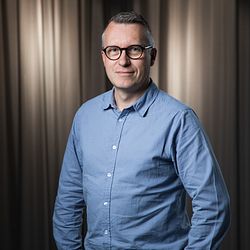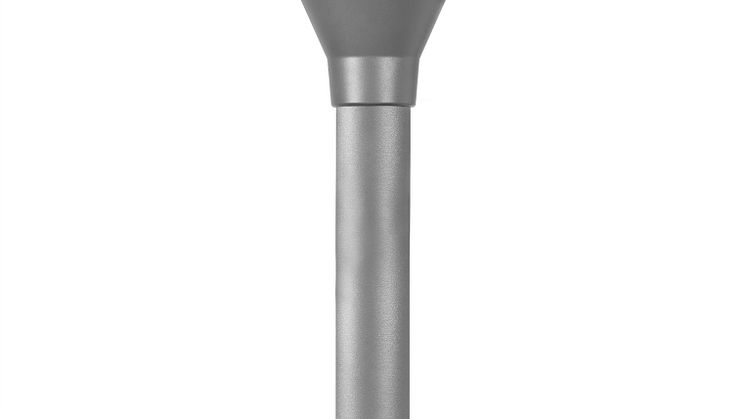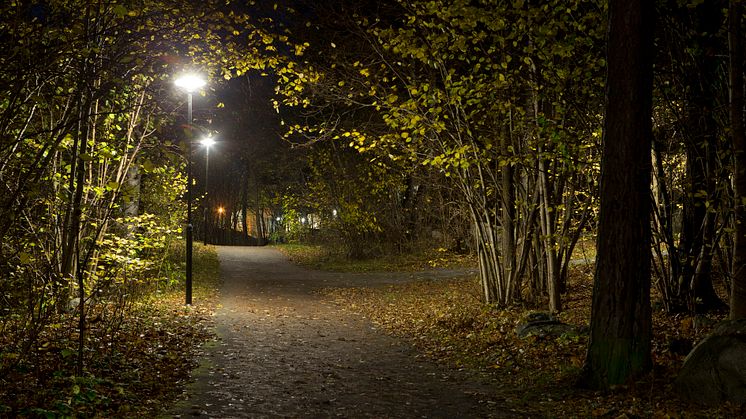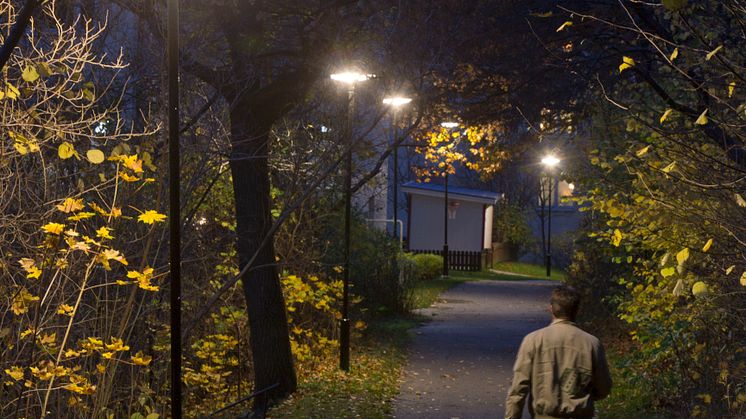
Press release -
Control of outdoor lighting halves energy consumption
This press release is also available in Swedish, see the attached file below.
The City of Stockholm and the Royal Djurgården Administration have joined with a number of partners in developing smarter outdoor lighting, both when it comes to energy consumption and in creating pleasant environments.
There is often less need for fully lit streets and other outdoor environments late in the evening and during the night. Switching off lights completely however, can make people feel insecure. But with the help of advanced control, we can both meet people's needs and save energy.
There are many places that could be more attractive in the evening if lighting was installed, but where it is expensive and impractical to run power lines. Solar-powered luminaires are an interesting alternative. It becomes especially important to conserve energy when sunlight is the sole source of power, and this calls for advanced control.
Solar-powered, presence-controlled luminaires have been installed at Djurgården, Sweden, that are entirely independent of the power grid. The needs were different in Bromma, Sweden, where the presence-controlled post top luminaires are not solar powered. But they can now communicate with one another so that lighting increases as people approach. Both at Djurgården and in Bromma, lighting is increased when presence is detected. And this saves energy. The majority of those interviewed in Bromma by the Royal Institute of Technology (KTH) didn’t notice any difference in their perception of safety after energy-efficient lighting was installed. At Djurgården, where there previously wasn't any lighting at all, people are very positive to the new solar-powered lighting. Forty-three percent of those interviewed said that they had never used the walkway after dark before.
Sustainable Innovation coordinated the project and Fagerhult and Leading Light supplied the luminaires. Tritech developed the radio-based control system for Bromma and the Royal Institute of Technology (KTH) evaluated the project, which was partially financed by the Swedish Energy Agency.
In the Stockholm region there are 50,000 luminaires for various types of walkways and bike paths. With the new technology, annual energy consumption could be reduced by 4,000,000 kWh.
Topics
Fagerhult is one of Europe’s leading lighting groups with approximately 2,400 employees and operations in 20 countries. We create modern products and exciting, energy-efficient environmentally-adapted lighting installations, successfully integrated into their individual environments. The Group includes such strong brands as Fagerhult, Ateljé Lyktan, Whitecroft Lighting, Eagle Lighting, LTS Licht & Leuchten, I-Valo, DesignPlan, Arlight and Lighting Innovations.




